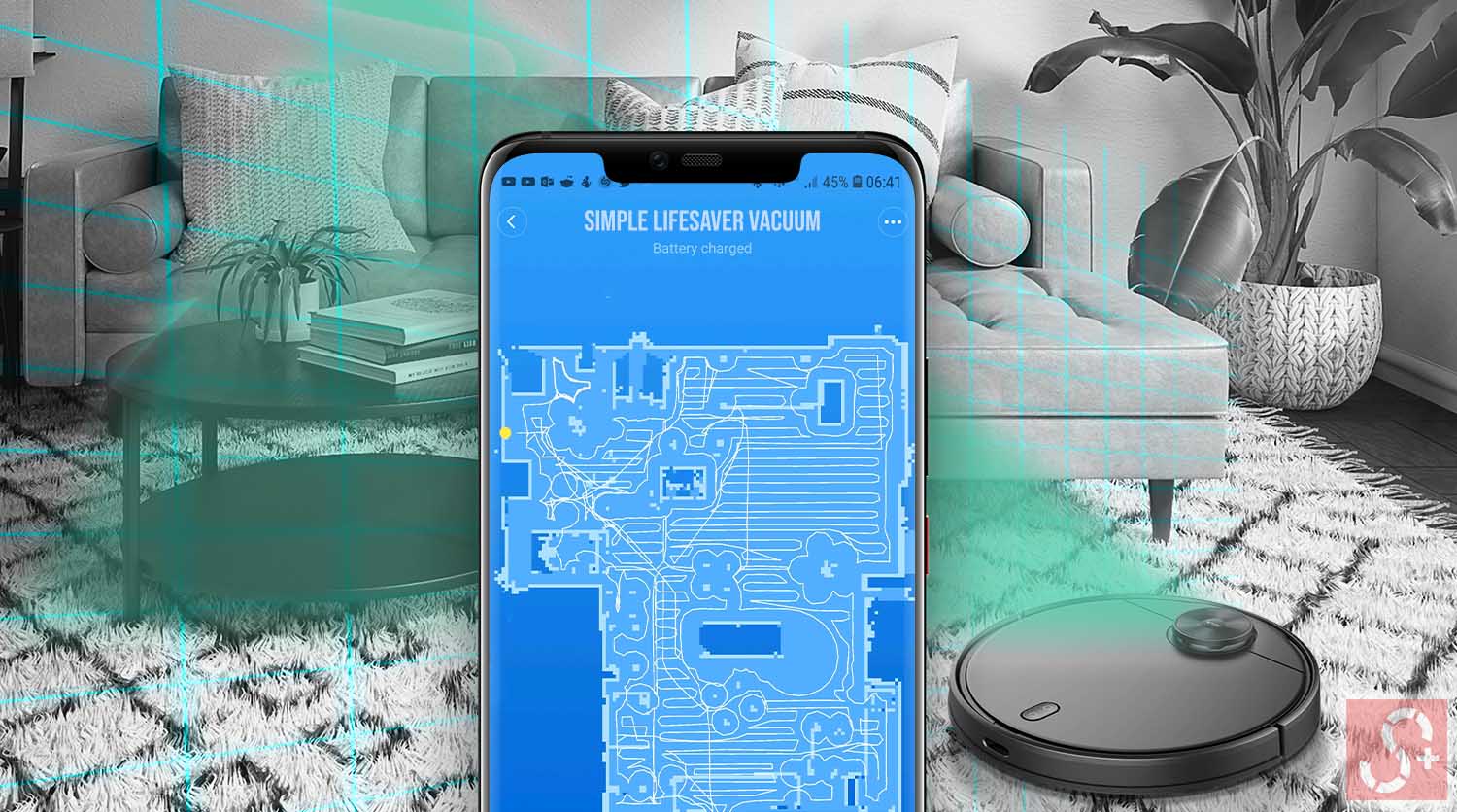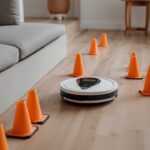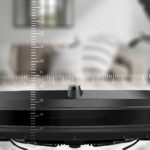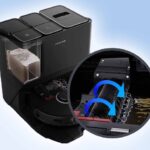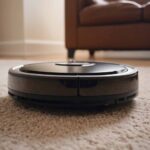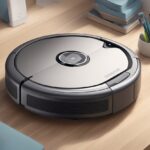Should you buy a robot vacuum with a mapping feature or not? It’s first essential to understand the difference between both types of robot vacuums.
Key Takeaways:
The main distinction between robot vacuums with mapping and without mapping features is their cleaning efficiency. Usually, robot vacuums that use mapping features are more efficient in cleaning spaces, but they are relatively more expensive than the ones that don’t use the mapping feature.
Read on to learn more about the difference between both types of robot vacuums and more.
Robot Vacuum Random vs. Mapped Navigation
| Sr. No. | Random Robot Vacuum Navigation | Mapped Robot Vacuum Navigation |
| 1. | Only relies on basic sensors like collision and cliff sensors. | Uses advanced technologies like VSLAM (optical navigation system) and LIDAR (laser navigation system). |
| 2. | Robot vacuums using this technology are generally available at low budget. | Robot vacuums using this technology usually come at a higher price point. |
| 3. | It takes relatively longer to clean the same area. | Takes relatively less time to clean the same area. |
| 4. | It can damage the furniture over time as it constantly collides with them. | These robot vacuums generally don’t bump into objects and hence have less chance of damage. |
| 5. | Improper space cleaning occurs as open areas tend to get cleaned more than the corners and other areas where objects are present. | Proper and efficient space cleaning happens since the robot vacuums and maps the area as it cleans and moves around systematically. |
Is Mapping Necessary For A Robot Vacuum?
Mapping features are not necessary for a robot vacuum. But if you have the budget to buy higher-end robot vacuums with advanced mapping technologies, then it’s definitely worth the investment.
Here are the pros and cons of robot vacuums with mapping capabilities:
| Pros | Cons |
| Better and more efficient cleaning | Relatively Expensive |
| Shorter runtime | |
| Less damage to surroundings |
Here’s why it might be time to upgrade your robot vacuum:
Robot vacuums have gone through another technological advancement. The latest robot vacuums in the market can vacuum, mop, empty themselves, and even clean their own mopping pad. It has been a game-changer in my household!
Time is the most valuable resource and the one thing you cannot buy. Every second that goes by will never be seen again! The more autonomous robot vacuums are, the more time you can spend doing the things you love.
Here are the pros and cons of robot vacuums without mapping capabilities:
| Pros | Cons |
| Relatively cheaper | Less efficient and improper cleaning |
| Longer Runtime | |
| Damage to surroundings since they bump into objects |
How Do Robot Vacuums Navigate?
Just like people, a vacuum needs to avoid bumping into things while it cleans a room. Humans move around and navigate any area using sense organs and related inputs.
The robot vacuum serves the same purpose but receives data from various sensors. Due to their built-in sensors, they can effectively avoid danger, clean most effectively, and find their way to unexplored areas.
The particular sensors utilized in a given robot vacuum will vary according to the company that made it.
But in general, the robot can use this real-time data to initiate a series of predetermined responses, allowing it to function autonomously and make judgments at the moment.
The small shape of the robot cleaner allows them to access even the tiniest crevices under various items. In addition, sensors let them navigate through areas they can’t physically access and might otherwise accidentally run into.
There are mainly two types of robot vacuums in terms of navigation: One that doesn’t use mapping features and one that uses the mapping feature. So let’s learn more about them.
#1. Robot Vacuums That Work Without Mapping
Robot vacuums that don’t use mapping features rely on multiple basic sensors to determine their cleaning route.
The bumper of a robot vacuum cleaner is often equipped with sensors to detect and steer around obstacles, including furniture legs, couches, and other household items.
As soon as the robot vacuum’s sensors detect a roadblock, it will automatically reroute itself around it. Then, the robot vacuum will spin and advance until the system locates an unobstructed route.
The robot cleaner’s movement is controlled by a bumper that presses against a surface. If a vacuum cleaner, for instance, encounters an obstacle on its left bumper, it will shift to the right. In addition, robot vacuums include a safety feature called a cliff sensor.
Robot vacuums are equipped with sensors that alert them as they approach an incline like a step’s edge.
Related Read: Will Robot Vacuums Go Up Or Down Ramps To Clean?
The cleaner has cliff sensors at its base. In addition, the cleaner regularly sends infrared signals to the floor to determine the exact distance between them.
The vacuum will know it has reached stairs or a decline in elevation if the signal does not immediately return.
Some high-end robotic vacuums include extra wall and wheel sensors in addition to the standard obstacle and cliff sensors. Robot cleaners may use this feature to locate walls and straight lines, which has the same name as the ability it describes.
Because of these sensors, the vacuum can also clean the floor’s edge without bumping against the wall. These sensors are located on the sides of the cleaner to prevent it from hitting the wall while equally picking up dirt from tight corners.
The robot vacuums equipped with mapping capabilities also use these sensors to locate new places in need of cleaning.
Robot vacuums include wheel-mounted sensors that record wheel rotational speeds and angular velocities to assess travel lengths and directional changes.
With the help of these sensors, the cleaners will always know exactly where they are.
#2. Robot Vacuums That Work With Mapping:
The ability to map and navigate is often reserved for more sophisticated robots. For example, some high-end versions of robot vacuums use laser sensors to detect obstacles in the dark.
- VSLAM: These robot vacuums are equipped with a camera that can photograph obstacles such as walls, doors, and furniture.
- LIDAR: The robot vacuum uses lasers to detect its distances to certain objects.
Both are quite effective, with data from each contributing to a complete picture of the space.
Although the mapping isn’t strictly required, it does provide some useful advantages.
With a blueprint in hand, a robot vacuum can plot out the most effective path for cleaning. Because of these mapping features, these robot vacuums follow a straight path, whereas other robots seem to move randomly.
Which Robot Vacuum Has The Best Mapping Feature?
Robot vacuums that use VSLAM, and LIDAR, technologies have the best mapping capabilities. LIDAR robot vacuums are more advanced than VSLAM since they use laser light to map and navigate and can even operate in complete darkness.
| Robot Vacuums That Use VSLAM | Robot Vacuums That Use LIDAR |
| Yeedi Mop Station Pro | Ecovac Deebot N8 Pro+ |
| Shark AI Ultra | Roorock Q5 |
| iRobot Roomba S9+ | Samsung Jet Bot AI+ |
Recommended Next: Robot Vacuums That Won’t Bump Into Things
Photo altered by simplelifesaver.com | Photo attribution: Minh Pham


